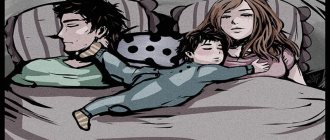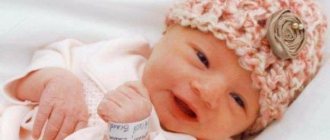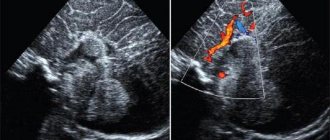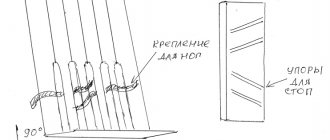A pediatric neurologist is a very important specialist who monitors the central and peripheral nervous system of a child, from birth to 18 years of age. What does a pediatric neurologist treat and what does a pediatric neurologist do? The primary task of this specialist is periodic observations of the stages of formation and development of the nervous system of a small patient, during which many progressive pathologies can be prevented. If it is impossible to prevent them and prevention does not help, an experienced pediatric neurologist determines the diagnosis and prescribes appropriate comprehensive treatment, which in most cases successfully cures the disease.
Today, there are many different diseases of the nervous system that differ from each other, which are classified according to a certain order. Let's list the main lesions of the nervous system and answer the question - what does a pediatric neurologist treat.
- Pathology associated with infection caused by exposure to harmful viruses and bacteria. A newborn child is most susceptible to such infectious diseases due to insufficiently developed immunity. That is why doctors do not recommend that parents visit crowded establishments with a small child.
- Epilepsy. It can be formed either as a result of injury or congenitally. Consultation and treatment with a neurologist are simply mandatory here.
- Diseases associated with severe bruises of the head area, traumatic injuries.
- Toxic pathology. Some drugs and medicines, namely their incorrect prescription and use, can provoke such damage to the nervous system.
- Genetic pathology. Passed on from parents or relatives due to appropriate heredity.
- Hypoxia, which in turn was observed in utero in the fetus.
A pediatric neurologist is very important for the formation of the normal functioning of the nervous system of a small child; he is able to carry out effective prevention of common pathologies.
What is the difference between a pediatric neurologist and a neurologist?
Very often, many parents ask a common question - is there a difference between a pediatric neurologist and a pediatric neurologist? In fact, these two definitions are absolutely identical, and their definitions are equivalent to each other. Why are both terms still used?
The fact is that the term pediatric neurologist is a rather outdated name for a specialist doctor, used in medicine until 1980, which has now taken on a different name - pediatric neurologist.
As for medical workers abroad, there is still a difference in terms:
A neurologist is a specialist who deals with diseases of the nervous system.
A neurologist is a specialist who carefully studies pathomorphology.
Content
- Ultrasound examinations of the brain
- Ultrasound of the hip joints
- Abdominal ultrasound
- Ultrasound of the heart
- Audiological screening
- Pediatrician
In the first month, the baby needs regular monitoring; at this time, the slightest developmental disorders can be identified and measures can be taken to eliminate them. The day after discharge, the baby is visited by the local pediatrician and a visiting nurse from the outpatient department. During the examination, the specialist measures height, weight, head circumference, and assesses weight gain. The doctor examines how the navel is healing and whether care is being carried out correctly. The specialist informs the mother which doctors are examined per month and invites her to an appointment for a medical examination when she reaches the age of one month.
What does a pediatric neurologist check and what are the specifics of his work?
Regardless of the type of appointment with a pediatric neurologist, primary or preventive, the doctor is obliged to carry out a strict examination procedure and give certain advice. What does a pediatric neurologist do and see in the office of a medical institution?
- Checks the stable functioning of the child’s visual reflexes;
- Checks muscle tone and strength level;
- identifies the presence of coordination of the baby’s movements;
- development of speech and memory.
- Determining the level of sensitivity.
After the neurologist examines the child and listens to complaints from the parents, the general picture of the child’s illness will become more or less clear to him. If necessary, the doctor may prescribe additional tests in the form of:
- Ultrasound of the brain and blood vessels. Dopplerography.
- MRI of the brain.
| Code | Name of service | Price |
| 6.1 | Appointment with neurologist G.M. Chernyaeva (examination, consultation, treatment prescription) | 2500 |
| 6.2 | Consultation with a neurologist Miroshnik E.E. (1-1.5 hours) | 5000 |
| 6.3 | Carrying out additional neurological examination (tests for dizziness, assessment of cognitive functions, study of the autonomic nervous system) | 600 |
| 6.4 | Treatment of paroxysmal positional benign vertigo (Epley maneuver) | 800 |
| 6.7 | Therapeutic drug blockade (excluding the cost of drugs) | 1900 |
| 6.8 | Therapeutic drug blockade (including the cost of drugs) | 2700 |
| 6.10 | Calling a neurologist to your home (Sviblovo) | 5000 |
| 6.11 | Calling a neurologist to your home (SVAO) | 6000 |
View all
Pediatric neurologist
A pediatric neurologist works in close collaboration with pediatricians, infectious disease specialists, speech therapists, and psychologists, and provides advisory assistance to these specialists.
The competence of a pediatric neurologist includes neurological diseases that can manifest themselves in the form of muscle cramps, headaches, sleep disorders, behavioral disorders, and general developmental disorders.
Appointment with a pediatric neurologist
The task of a pediatric neurologist is to determine what causes these conditions, get rid of them by prescribing effective treatment, or teach parents to control the symptoms.
The most common reasons for visiting a pediatric neurologist are: seizures, increased excitability, cognitive impairment, infectious and inflammatory diseases of the brain, and congenital anomalies.
Diseases
- epilepsy
- meningitis
- encephalitis
- herpes zoster
- enuresis
- neuromuscular diseases (myopathies, spinal muscular atrophy, Duchenne muscular dystrophy, congenital muscular dystrophy)
- polyneuropathy and other lesions of the peripheral nervous system
- apraxia (inability to perform complex goal-directed actions)
- cerebral palsy and other paralytic syndromes
- hypoxic lesions of the central nervous system
- migraine
- traumatic brain injuries and spinal injuries
- behavioral disorders (including attention deficit disorder, tics, Tourette's syndrome)
- sleep disorders
- autism spectrum disorder
- developmental disorders (including speech delay and psychomotor impairment)
- speech disorders (stuttering, alalia)
- congenital brain abnormalities
- neurological consequences of other diseases/infections
- genetic diseases affecting the development and condition of the nervous system (hereditary neuropathies, spinal muscular atrophy, idiopathic dystonia)
- lesions of the brain and spinal cord caused by autoimmune diseases (multiple sclerosis, myasthenia gravis)
- damage to the nervous system due to systemic connective tissue diseases (sarcoidosis)
- cerebrovascular accidents (hemorrhagic stroke, ischemic stroke)
- malignant neoplasms of the brain and spinal cord
Symptoms In infants:
- lack of appetite, poor weight gain
- frequent and profuse regurgitation
- frequent crying for no reason
- trembling of the chin and/or limbs
- involuntary movements (shudders)
- high muscle tone (frequent throwing back of the head, arching the whole body back, the tendency to turn the head only in one direction, increased tension in the arms or legs)
- low muscle tone (lethargy, low activity)
- freezing (absence) without convulsions
- febrile seizures short, restless sleep
In young children and adolescents:
- sleep disorders
- gait disturbance
- dizziness, tinnitus
- headache
- increased fatigue, irritability, tearfulness
- motor activity disorders (involuntary muscle contractions, tremors)
- respiratory dysfunction
- loss of consciousness
- convulsions
- increased excitability
- slurred speech
- lack of attention, concentration
- problems remembering information
It is worth contacting a pediatric neurologist if the child’s symptoms of a “common cold” have sharply worsened—the temperature suddenly rises, vomiting begins, and signs of meningeal syndrome are observed.
The child behaves restlessly, sleeps poorly, cannot concentrate, gets tired quickly, complains of dizziness, headache, and periodically loses consciousness.
There is a violation of speech, motor, respiratory, swallowing functions, and tremors of the limbs.
The child has seizures of a non-epileptic nature (without loss of consciousness).
The stability of gait and coordination of movements is impaired.
It is difficult for a child to concentrate, sit still, remember simple actions, and perform them consistently.
An appointment with a pediatric neurologist at the Rassvet clinic consists of several stages:
Consultation with a pediatric neurologist
A consultation with a pediatric neurologist is necessary to collect a medical history, information about the child’s developmental characteristics and to identify disturbing symptoms as signs of a neurological disease.
The neurologist will conduct an initial examination, ask the parents to tell what is bothering the child and for how long, at what moments the symptoms worsen. Depending on the age of the little patient, the doctor will evaluate speech, motor, psychomotor development, and information absorption skills. He will study the medical history, ask you to talk about the treatment that was prescribed previously, and rule out the factor of heredity. If necessary, he will involve doctors of other specialties: pediatrician, infectious disease specialist, child psychologist, epileptologist, speech therapist.
To clarify the diagnosis, the doctor may prescribe a number of tests and diagnostic studies.
Diagnosis of nervous system diseases in children
Diagnosis of diseases of the nervous system includes both laboratory and imaging methods.
Typically, clinical and biochemical blood tests, urinalysis, tests that detect electrolyte changes, the presence of inflammation or infection are prescribed. If necessary, a study of the cerebrospinal fluid (spinal cord puncture) is performed.
Using modern imaging methods - neurosonography (for children under 1 year), ultrasound, ultrasound, EEG, ECHO, CT, MRI - the doctor determines signs of infection, inflammation, cerebrovascular accidents, functional disorders and other pathologies.
Hereditary neurological diseases (neuropathies, myopathies) are diagnosed using genetic testing, nerve-muscle conduction studies, muscle biopsy and nerve biopsy.
Treatment by a pediatric neurologist
The success of treatment of neurological diseases in children depends on the attentiveness (alertness to symptoms) of parents, correct and timely diagnosis, the specifics of the development of pathology, the characteristics of pregnancy and childbirth of the mother, and hereditary characteristics.
The effectiveness of treatment for meningitis or encephalitis is determined by timely diagnosis and correct treatment tactics for these conditions that are dangerous to the health and life of the child. Depending on the nature of the disease (bacterial, viral, fungal, or parasitic), your doctor may prescribe antibiotics or antivirals, anticonvulsants, and corticosteroids to reduce brain swelling and inflammation.
Muscle weakness in a child can be caused by both pathology of the muscles themselves and pathologies of central/peripheral motor neurons or the neuromuscular junction.
If we are talking about congenital myopathy, the doctor will need to determine which of its seven types will have to be dealt with. All congenital myopathies have differences in symptoms, treatment, complications and prognosis. In this case, parents need to be prepared for a complex program of diagnostic measures, including blood tests for muscle enzyme (creatine kinase), electromyogram (EMG), muscle biopsy, genetic testing and other studies. It is important to understand that a child with such a disease requires constant symptomatic and accompanying therapy.
If a child is diagnosed with epilepsy, it is important to begin medical care as soon as possible. And although epilepsy cannot be cured, according to statistics, with the help of modern medications and surgical methods, seizures are controlled in approximately 70% of patients with this diagnosis. If drug therapy is ineffective or causes serious side effects, symptoms can be reduced with the help of a special diet.
Quite often, parents encounter seizures at elevated temperatures in children under 6 years of age. It is important to distinguish between the so-called febrile seizures and epilepsy. Multiple and prolonged episodes of febrile seizures (more than 10 minutes, affecting only one part of the body, or repeated throughout the day) are considered a risk factor for epilepsy, but there is no evidence that such convulsive seizures associated with hyperthermia cause brain damage. According to the latest data, only those children who have a history of fairly prolonged seizures (more than 30 minutes) are at risk of developing epilepsy with age. They can cause damage to a part of the brain called the hippocampus.
What will you get from a pediatric neurologist at the Rassvet Clinic?
Neurologists at the Rassvet Clinic use a multidisciplinary approach, which allows them to select the optimal treatment tactics for neurological diseases in children and prevent their complications.
Our doctors will quickly and accurately determine the true cause of functional disorders, behavioral characteristics and development of the child. For this purpose, the clinic has all the necessary and modern diagnostic equipment.
In Rassvet, they will conduct all the necessary routine preventive examinations of the child and prescribe effective treatment based on the principles of evidence-based medicine and recommendations of the world's leading medical and scientific organizations. They will provide all the necessary assistance in complex neurological cases, with paroxysmal conditions and acute injuries. If the disease cannot be treated, our clinic will offer you an individual plan for correcting the child’s condition and accompanying therapy.
Our main goals are to preserve the health of your children and maintain an acceptable quality of life for young patients and their parents.
When should you show your child to a neurologist?
At the birth of a child, a visit to the office of a pediatric neurologist for preventive purposes is simply mandatory. Records are kept in the children's medical history card. Reception is held:
- When the baby is one month old.
- Next at 3 months.
- After six months.
- After one year of age.
- at 4-5 years old (preschool period)
- at 7 years old (before school);
- at 13-14. (adolescence period of growing up)
In addition, if there is even the slightest complaint or suspicion of a disorder in the nervous system of your little child, it is urgently recommended to consult a doctor, namely:
- sleep disturbance, sudden awakenings during night and daytime sleep with characteristic crying and hysterics. Restless short sleep, capriciousness of actions, increased excitability.
- Trembling of the chin and limbs when crying.
- Regurgitation when feeding, sudden vomiting when capricious.
- Lethargy, fatigue, lack of interest in outdoor games and food.
- Periodic convulsions.
- Throwing the head back during sleep.
- Headache.
- State of fainting.
- Muscle twitching uncontrollable by the baby.
- Deviations in development - the child does not walk, does not sit independently, does not crawl, does not hold his head, does not look to the sides.
- Speech defects, delayed development of speech or its absence.
If these symptoms are detected, you must take your child to the children's neurological department!
From this video you will learn what the consequences of not visiting a neurologist may be:
Homework for parents
In addition, right from birth, you can independently monitor the growth of the child’s head circumference, which is one of the main indicators of normality and pathology. How to do this correctly?
- Measure the child's head circumference weekly and record the resulting numbers in a specially kept notebook.
- When measuring, place the measuring tape at the most protruding points of the skull (frontal and occipital protuberances).
- To avoid misunderstandings, the measurement must be carried out by the same person.
In addition to the increase in head circumference, you can monitor the increase in chest circumference, which is one of the general anthropometric indicators of child development. For this:
- Measure your chest circumference weekly on the same day you measure your head circumference;
- Place the measuring tape at the level of the baby's nipple line.
Why is such “amateur activity” needed? By taking these simple measurements, you will help the doctor draw up an objective picture of the child’s development, and you yourself can have peace of mind, excluding the possibility of developing serious diseases (normally, the monthly increase in head circumference in the first three months of a full-term baby should not exceed 2 cm per month; up to a year, the circumference The chest is approximately 1 cm larger than the child’s head circumference).
Well, now a few words about what can and should be normal and what is pathological. I tried to frame the conversation on this topic in the form of answers to questions that most often concern young parents.
What determines the shape of the skull?
Normally, as a child passes through the birth canal, the bones of the skull overlap each other. Features of the course of the birth process affect changes in the shape of the skull. In the event of a complicated birth, a sharp juxtaposition of the skull bones may occur on top of each other, and this will lead to its deformation, which will persist for quite a long time.
A change in the shape of the skull can be expressed in the persistence of swelling of the soft tissues of the head in the place where the child moved forward along the birth canal. The swelling disappears within the first 2-3 days. Cephalohematoma (bleeding under the periosteum) also changes the shape of the skull. It resolves more slowly than swelling, and this process requires the supervision of specialists (neurologist, surgeon).
Changes in the shape of the skull are also associated with age-related characteristics. In a newborn, the skull is elongated in the anteroposterior direction, and after a few months the transverse size of the skull will increase and its shape will change.
Some change in the shape and size of the skull can also occur during normal development in premature babies, or when the child is often placed on the same side, or when the child lies on his back for a long time.
How does the head grow?
The average head circumference of a newborn is 35.5 cm (the range of 33.0-37.5 cm is considered normal). The most intensive increase in head circumference in full-term babies is observed in the first 3 months - on average, 1.5 cm for each month. Then the growth decreases slightly, and by the age of one year the child’s head circumference is on average 46.6 cm (normal limits are 44.9-48.9 cm).
The head circumference of a premature baby increases faster than that of a full-term baby, and the increase is most pronounced during the period of active weight gain, and by the end of the 1st year of life it reaches normal values. The exception is very premature babies.
However, one should always keep in mind that even with normal development of a child, there may be physiological deviations from average values, which are often associated with constitutional characteristics or environmental influences.
What are fontanelles?
The fontanelles are located in the area where the bones of the skull meet. The anterior, large, fontanel is located between the frontal and parietal bones. At birth, it measures from 2.5 to 3.5 cm, then gradually decreases by 6 months and closes at 8-16 months. The posterior, small, fontanel is located between the parietal and occipital bones. It is small in size and closes by 2-3 months of life.
In pathological processes accompanied by increased intracranial pressure, the fontanelles close later, and sometimes they open again. Small sizes of the anterior fontanel may be a variant of the norm if they are not accompanied by a decrease in the circumference of the skull, the rate of its growth and a delay in psychomotor development.
The above signs do not limit the variety of possible deviations in a young child. However, it should be borne in mind that any unusual appearance of a child requires a thorough examination and monitoring of his growth and development.
Advertising
What is mmd in neurology in children
MMD is a minimal brain dysfunction caused by acute failure of the central nervous system, disturbances in the child’s mental state, as well as a number of other dangerous symptoms.
How does mmd manifest itself in neurology in children?
- Overly active behavior, namely constant movements of both arms and legs, lack of perseverance.
- Quick distraction to the presence of any irritants.
- Inability to play alone.
- He talks incessantly, interrupts adults, and does not hear others when they ask him questions.
- Moves from one task to another without completing the first.
- Losing things in kindergarten, school, absent-mindedness.
A good pediatric neurologist during examination:
- examine the child’s medical record;
- will pay attention to parental concerns;
- will take an interest in the characteristics of the child’s life and development;
- will clarify how pregnancy and childbirth proceeded.
After making an accurate diagnosis, the pediatric neurologist monitors the baby throughout the entire period of treatment. Look for pediatric neurologist reviews that describe the pediatric neurologist's appointment in detail.
The Center for Natural Development and Child Health guarantees qualified medical care to every child. Remember, by contacting a specialized specialist in a timely manner, you increase your children’s chances of recovery.
You can make an appointment with a doctor at the Center through:
online appointment form
or by calling the Center in Moscow:
+7,, +7 (962) 947-38-08
during the working hours of the Center (daily, seven days a week and holidays, from 9.00 to 21.00)
All specializations
- Allergists-immunologists
- BRT specialist
- Gastroenterologist
- Gynecologists, obstetricians-gynecologists
- Homeopaths
- Dermatologist
- Pediatric gynecologist
- Child psychiatrist
- Infectious disease parasitologist (virologist)
- Cardiologists
- Consultants for breastfeeding and care
- Speech therapists
- Massage therapists
- Nurse
- Neurologists
- Nephrologists
- Osteopaths
- Otolaryngologists (ENT doctors)
- Ophthalmologists
- Pediatricians
- Podiatrist
- Ultrasound (gynecology, obstetrics)
- Ultrasound diagnostics
- Urologist-andrologist
- Surgeons, orthopedists, traumatologists
- Endocrinologists
Symptoms
- Allergies in children. Symptoms Treatment
- Sore throat in children
- Runny nose in a child
- Paleness in a child
- Chest pain in a child
- Acute pain in the abdomen, cutting pain. Lower abdominal pain.
- Abdominal pain in a child; Child's stomach hurts and vomiting
- Knee pain in a child
- Muscle pain
- Leg pain in children, arm pain in children
- Back pain in a child
- Otitis in children, ear pain in a child
- Pain in a child's mouth
- Pain when urinating in children, difficulty urinating; it hurts for a child to write
- Pain in the rectum; itching in the rectum, pinworms in children
- Joint pain in children. Joint swelling
- Overweight child underweight child
- Problems with breastfeeding a child
- High blood pressure
- Gas in a child
- Eye diseases; the child's eyes hurt
- Headache in a child; the child has a headache
- Dizziness in a child
- Motor disorders in children
- Childhood and adolescent depression
- Bone deformities in children
- Jaundice in children, jaundice in newborns
- Delayed mental development of a child
- Constipation in a child
- Shortness of breath in a child
- Toothache in a child
- Itching and vaginal discharge in girls
- Itching and rash in a child
- Child's cough
- Skin diseases in children
- Colic in newborns
- Strabismus in children
- Bruising and bleeding in a child
- Child masturbation
- Impaired coordination of movements in a child
- Growth disorders in children. The child is growing too slowly or too quickly.
- Arrhythmia in children (irregular heart rhythm)
- Stool disorders in children. Loose stools in a newborn. Blood in the child's stool.
- Postural disorders in children
- Sleep disorders in children; baby doesn't sleep well
- Nocturnal urinary incontinence (enuresis) in children
- Urinary incontinence in a child
- Unpleasant sensations after eating: reflux, vomiting, belching, heartburn in a child
- Blood from the nose in a child (nosebleeds)
- Fainting (loss of consciousness) in a child
- Deviation in children's behavior: aggression in children; the child is lying
- Bone fractures in children
- High temperature in a child
- Diarrhea, loose stools in a newborn
- Diarrhea, loose stools in a child
- Blue skin, bluish skin in a child
- The child does not eat well. What to do?
- The child has difficulty hearing. What to do?
- Swelling, growth, formation on the child’s body
- Poor vision in children: myopia, farsightedness, astigmatism
- Speech development disorders in children
- Vomiting in a child
- Curvature of the legs in children
- Drooling in a child
- Regurgitation in newborns
- Seizures in a child
- Tick in a child
- Difficulties in teaching schoolchildren
- Abdominal enlargement, bloating in a child
- Enlarged lymph nodes in children
- Breast swelling
- Bites. Consequences and symptoms.
- Fatigue, tiredness of the child
- Wheezing/noisy breathing in a child
- Frequently ill children
- Increased excitability of the child / impaired attention in children
- Irritability and emotional outbursts in a child
What is neurology in children?
Neurology in children is a complex, multifaceted medical discipline that deals with diseases of the nervous system of a small patient. If a qualified doctor still detects neurology in a child, this can be explained by the following most common reasons:
- Receiving a birth mechanical injury;
- fetal hypoxia, as well as insufficient oxygen supply due to possible repeated entanglement in utero;
- complex process of childbirth and labor;
- acute toxicosis of pregnant women throughout the entire period;
- genetic inheritance.
What is neurology in eight-year-old children?
The child’s psyche is like plasticine; it is very susceptible to stress and any circumstances; parents, in turn, are advised to ensure that it is not damaged. In what cases does neurology occur in school-age children, namely 8 years old?
- Excessively heavy loads on the child’s body.
- A feeling of constant fear caused by the behavior of parents, as well as their pressure.
- Adaptation period at school.
Such neurosis is accompanied by anxiety, sometimes stuttering, tics, and fainting. At the slightest manifestation of these symptoms, you should immediately consult a doctor.
The first year of life: what to pay attention to?
Diseases of the nervous system identified at such an early age are usually associated with pathologies of pregnancy, difficult childbirth, intrauterine diseases and birth injuries. Increased attention to the child's health should be paid if the baby was born prematurely.
The first symptoms that should alert parents include:
- Restless sleep;
- Frequent belching;
- Tremor of the chin and limbs;
- Developmental delay.
The last point requires comment: many parents simply do not know what a child who has reached a certain age should be able to do, and therefore do not suspect the presence of deviations. Today, a wide variety of literature is freely available, telling about preparation for childbirth and the specifics of children’s development in the first year of life. It also provides practical recommendations and simple exercises aimed at ensuring the normal development of the baby. Read - it's important!
In the absence of severe complications of the childbirth period and diseases that appeared soon after birth, The optimal time for the first preventive examination by a pediatric neurologist is the child’s age of 1 month. Further, preventive examinations of healthy children are usually carried out at the ages of 3, 6, 9 and 12 months, at 2, 3 and 6-7 years (before school).Children under one year of age are most often concerned about:
- causeless vomiting not associated with food intake without intestinal syndrome,
- bulging fontanelle,
- “rolling up” while crying with turning blue;
- “trembling” of the chin, hands; lethargy of the child;
- stiffness, decreased motor activity in the limbs or in one of the limbs;
- torticollis, short neck, head inserted to the body.
Pediatric neurologists note that there may be reasons for “freezing,” a short-term deviation of consciousness with “nods” (sharp tilts of the head forward), “nods” (sharp tilt of the torso forward).
The most common complaints in children under one year of age are attacks of loss of consciousness with convulsions.
What symptoms should alert parents to consult a pediatric neurologist for children under one year of age?
- Firstly, all children with a complicated obstetric history must be examined by a neurologist at the age of one year.
- Secondly - children with large and small head sizes, with large fontanel sizes, bulging, fontanel disorders, oblique posture, lethargy of the child (“lazy”, inactive), very restless, clubfoot, clubfoot.
What is a burdened obstetric history?
A pediatric neurologist will answer this way: these are abortions, miscarriages, illnesses during pregnancy, the threat of miscarriage, obstetric care during childbirth, surgical childbirth, bad habits (alcohol, smoking).
What examination methods does a pediatric neurologist perform?
- Depending on the suspected diagnosis, the examination may vary. It is necessary to take pictures of the cervical spine, an electroencephalogram (EEG), and a cardiogram in case of fainting to exclude heart pathology. It is necessary to examine the condition of the fundus of the eye - this is the “mirror” of the brain.
- A CT scan is required if there is a suspicion of a space-occupying process in the brain, tumors, brain abscesses, cysts, or parasitic diseases of the nervous system.
- In children under one year of age, NSG (neurosonography) or ultrasound of the brain is used to show the condition and size of the ventricles of the brain. EMG (electromyography) recording of biocurrents from muscles.
- Tests that a neurologist can prescribe: in addition to general blood and urine tests, these are blood tests (for toxoplasmosis, chlamydia, cytomegalovirus, etc.) for inflammatory diseases of the nervous system and with a complicated obstetric history.
Where do children with neurological diseases receive treatment?
Emergency patients receive treatment in the neurological department - these are neuritis of the cranial nerves, seizures for the first time, then they are discharged under observation to the clinic for outpatient treatment.
What treatments are used in the treatment?
Depending on the disease and age, these include medications, physiotherapy, exercise therapy, massage and spa treatment.










